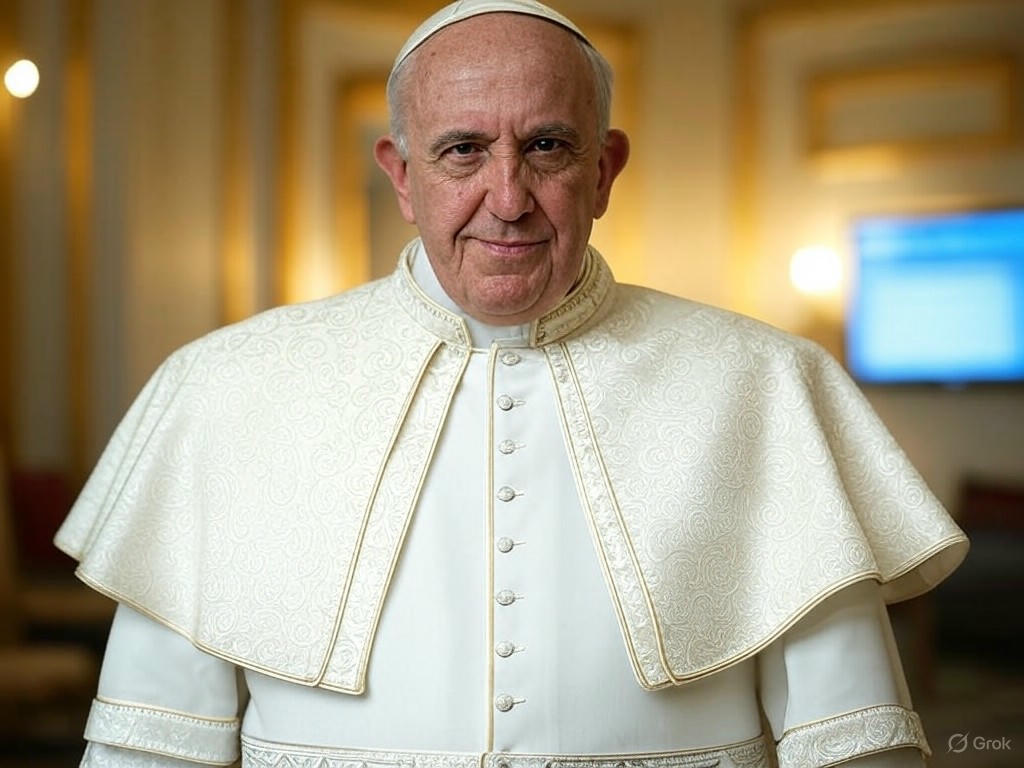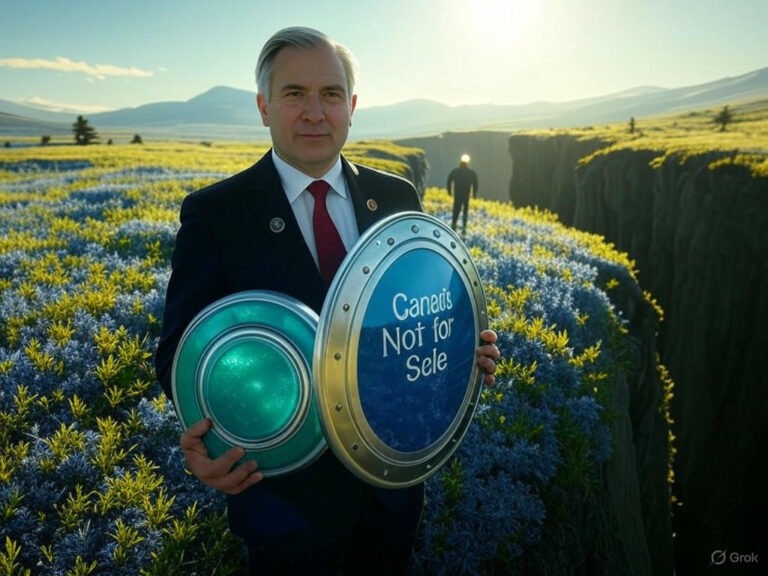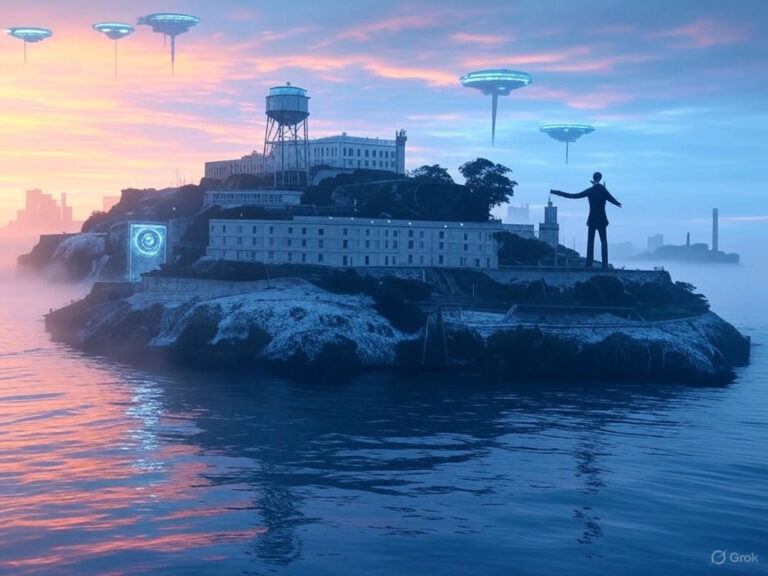
Trump AI-Generated Pope Image Sparks Major Controversy
The Digital Storm Around Trump’s AI-Generated Image
Imagine scrolling through social media and stumbling upon an AI-generated image of a former U.S. president dressed as the Pope—it’s jarring, right? That’s exactly what happened when an AI-generated image of Donald Trump in papal robes went viral, igniting a firestorm of debate at the intersection of politics, faith, and technology. This Trump AI-generated image didn’t just spark curiosity; it exposed deep-seated tensions about respect for religious symbols and the unchecked power of generative AI. Within hours, the online world was buzzing with backlash, forcing us to question how far digital creativity should go.
As global audiences grappled with the image’s timing—shared during a period of mourning for the Catholic community—it highlighted the rapid evolution of AI tools and their potential to blur reality. What makes this incident so compelling is how it mirrors broader societal shifts, where a single post can amplify misinformation and offend millions. Have you ever wondered how a piece of digital art could lead to international outcry?
Breaking Down the Viral Spread of the Trump AI-Generated Image
The Trump AI-generated image first appeared on a Friday evening, coinciding with widespread grief over the loss of a beloved religious leader and the anticipation of a new papal selection. In this image, Trump was depicted in full papal regalia, seated on a throne, which many viewed as not only inaccurate but profoundly disrespectful. The poor timing amplified the controversy, as Catholics worldwide were in a reflective state, making the post feel like a direct affront. This moment underscores the ethical minefield of AI-generated content, where context matters as much as the creation itself.
Sources like ABC News reported that the image spread like wildfire, drawing immediate criticism for its audacity. For instance, it prompted questions about whether humor in politics should override cultural sensitivity. This Trump AI-generated image serves as a stark reminder that technology doesn’t exist in a vacuum—it’s shaped by and impacts real human emotions and traditions.
Strong Backlash from the Catholic Community
Catholic leaders didn’t hold back in their responses to the Trump AI-generated image. Cardinal Timothy Dolan, the archbishop of New York, labeled it a “brutta figura,” an Italian term for something embarrassingly out of place, reflecting the widespread hurt. The New York State Catholic Conference issued a sharp statement, urging the president not to mock their faith and emphasizing that such depictions cross a line. This reaction wasn’t isolated; it echoed through various channels, showing how deeply the image cut.
Father James Martin, known for his insightful commentaries on papal matters, called it “incredibly poor taste,” especially amid the global focus on the upcoming conclave. If you’re part of a religious community, you might relate to how symbols like the Pope’s attire hold immense sacred value. This incident raises a key point: In our digital era, where AI can fabricate anything, how do we protect what’s holy from becoming meme fodder?
Political Defenses Amid the Trump AI-Generated Image Debate
Not everyone saw the Trump AI-generated image as an offense. Vice President JD Vance, who is Catholic, downplayed the issue, arguing that jokes are part of free expression and shouldn’t escalate into bigger conflicts. The White House press secretary countered by highlighting Trump’s history of supporting religious liberty, including his attendance at papal events. These defenses add layers to the story, showing how political figures often navigate controversy with a mix of humor and history.
Yet, this raises an interesting question: Is defending such content a way to promote free speech, or does it overlook the harm caused? By examining these reactions, we see that the Trump AI-generated image isn’t just about one post—it’s about balancing satire with sensitivity in public life.
Generative AI’s Role in Fueling Ethical Dilemmas
At the heart of this uproar is generative AI, a tool that’s revolutionized content creation but also introduced significant risks. The Trump AI-generated image exemplifies how AI can produce engaging visuals that go viral, yet it also fuels misinformation by making falsehoods indistinguishable from reality. Experts from organizations like EPIC point out that while AI offers creative opportunities, it can easily lead to disrespectful or inflammatory outcomes.
Key issues include the lack of respect for cultural symbols and the rapid spread of unverified content. For example, imagine if AI-generated images started altering historical events—could we trust what we see online? This Trump AI-generated image pushes us to advocate for better guidelines.
Escalating Concerns with AI and Misinformation Linked to Trump’s Image
The Trump AI-generated image has become a case study in how AI manipulates narratives, turning a simple digital creation into a global headache. On one hand, generative AI boosts creativity in fields like art and education; on the other, it accelerates misinformation, as seen in this controversy. Reports from digital rights groups highlight how unchecked AI can exacerbate tensions, especially when shared by influential people.
| Benefits of Generative AI | Risks Highlighted by Trump’s Image |
|---|---|
| Fosters innovative art and educational tools | Generates disrespectful or false imagery that offends communities |
| Enhances marketing and communication strategies | Promotes biased content that misleads audiences |
| Allows fast content production | Intensifies cultural or political divides unnecessarily |
This balance is crucial, as the Trump AI-generated image demonstrates the need for users to verify sources before sharing. What if we all adopted simple habits, like checking for AI indicators, to curb such issues?
How Social Media Amplified the Trump AI-Generated Image Controversy
Social media platforms turned the Trump AI-generated image into a full-blown spectacle, with debates erupting across timelines in mere hours. Supporters framed it as harmless satire, while critics demanded accountability from public figures and better moderation tools. This rapid spread shows how algorithms prioritize engagement over ethics, often at society’s expense.
For a relatable example, think about how a viral tweet can snowball into news headlines. In this case, it not only divided opinions but also sparked discussions on global tech policies, making the Trump AI-generated image a catalyst for change.
Pushing for Regulation in the Wake of Trump’s AI-Generated Image
This incident is fueling calls for stricter rules around AI-generated content, particularly when it touches on sensitive topics like religion or politics. Experts suggest investing in media literacy programs to help people spot fabricated images and understand their origins. Actionable steps could include platforms adding clear labels for AI content or users fact-checking before engaging.
By promoting these measures, we can foster a more responsible digital environment. For instance, schools could integrate AI ethics into curricula, empowering the next generation to handle such tools wisely.
Reflecting on the Lasting Impact of the Trump AI-Generated Image
In the end, the Trump AI-generated image controversy is a wake-up call for digital ethics, urging us to blend innovation with respect. It highlights the importance of truthful communication and sensitivity in our increasingly connected world. As we move forward, let’s commit to using AI in ways that build bridges, not barriers.
What’s your take on this? I’d love to hear your thoughts in the comments below—share this article with friends or explore more on AI ethics to stay informed.
References
- Catholic Community Reacts to Trump’s AI Image of Pope. ABC News. Source Link
- Global Reactions to the Trump AI Pope Image. YouTube. Source Link
- Additional YouTube Coverage. Source Link
- Bluesky Profile on AI Discussions. Source Link
- EPIC Report on Generative AI. Source Link
- ML News of the Week Repository. GitHub. Source Link
Trump AI-generated image, Pope controversy, Catholic backlash, generative AI ethics, misinformation, Trump AI image controversy, AI in politics, religious sensitivity, digital misinformation, social media AI debates






